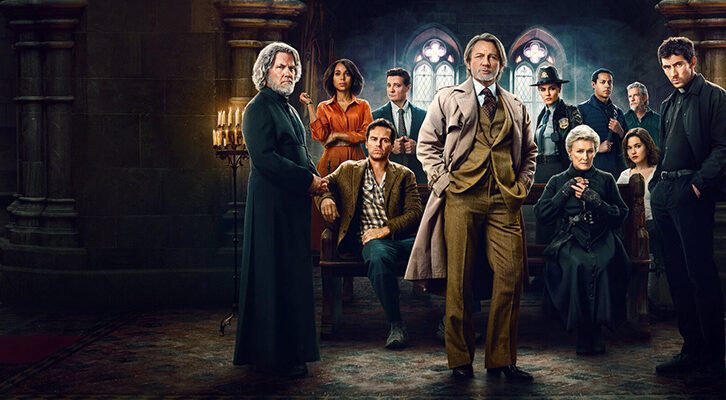
RaMell Ross on Adapting Colson Whitehead, Black Subjectivity, and the Epic Banal
"The god of the camera is a colonizer but a cul-de-sac history of exploitation is held in black skin.”
Literary adaptations are low-key Hollywood’s bread and butter. And film being a director’s medium—or so the cliche goes—it’s not hard to guess what’s appealing about working with vetted IP. If a story is already brilliant, a filmmaker can focus their attention entirely on visual storytelling. And given solid source material, they may feel more invited to take big swings.
Of course we love a faithful period piece, or a sumptuously shot epic. And sometimes it’s plenty satisfying just to see the sand worm conjured. Or hear Jane Austen’s perfect dialogue spoken aloud. But the book-to-screen adaptation that really makes the case for itself—the kind that finds the visual possibilities baked into a story’s bones—is genuinely rare.
RaMell Ross, the artist, filmmaker, and self-described “liberated documentarian” behind Nickel Boys, the buzzy new film adaptation of Colson Whitehead’s 2019 novel, has pulled off the hat trick.
*
Colson Whitehead’s The Nickel Boys is a sobering work of historical fiction. Set in the 1960s at a Florida reform school after the real and harrowing Dozier Academy, the book follows two incarcerated Black boys—Elwood and Turner—who attempt to escape their miserable prison. In spite of grim circumstance, they find comfort in one another.
Though Whitehead’s novel is told in a third person omniscient, in Ross’s version of Nickel Boys, point of view is the poetic engine. The camera relays the world as if through the eyes of our two protagonists—the newly incarcerated Elwood’s at first, then Turner’s. We feel our heroes intimately through the direction of their gazes, and only get to glimpse them through each other’s eyes. To Ross, this choice is buoyed by the text. Because “the way the boys were treated is dictated by the ways that they are seen.”
In general, Ross favors a photographic logic over a cinematic logic. “Point of view is the way in which we are in our own worlds anyway. So to me this is the most natural way to use the camera,” he told me, when we spoke by phone the other day. “Reading the book I’m thinking in first person, connecting with both of the characters… it’s how I imagine them seeing the world. I’m not like watching them see the world, if I’m identifying with them.” I was struck by the obviosity of this statement. Putting the viewer in a character’s head also mimics the reading experience.
The first person shooting method, which Ross pioneered in a previous film, the documentary Hale County This Morning This Evening, also allowed for a deep focus on what the director calls the “epic banal.”
“The god of the camera is a colonizer but a cul-de-sac history of exploitation is held in black skin.”
On the one hand, this term teases a politics. By entrusting his historically disenfranchised subjects with a unique gaze, an artist can theoretically provide “…a relief to the narrative thrust that essentializes and narrativizes Black life into consumable and reductive—I wanna say language, or experiences,” Ross said. I think of all the flashes in Nickel Boys that linger on an image—a hand in green grass, a mother’s tired face, a sun-dappled boxcar, a shiny new penny. They’re emotional and involving, these shots. Because when the abstract is made personal, life comes in.
Attention to the epic banal also lets an artist skirt a certain trap that can follow visual historical narratives: the pressure to re-enact trauma.
The Nickel Boys is set at what Whitehead himself has called an “evil place.” The boys suffer many kinds of physical, mental, and spiritual abuse, and some do not survive it. But that physical violence, “conceptually, was not something we [Ross and co-writer Joslyn Barnes] wanted to show,” Ross said. “Because Black people are just over-indexed with this across time, and globally… and it just seems like the image is already in your head. It’s more interesting if you ask the viewer to draw on… their personal archive of those images.”
Ross also noted that if the first person camera concept is to be taken literally, one rarely witnesses a personal harm. “You have to ask first where one looks, when they’re going through something traumatic. And anytime I’ve gone through anything with pain and injury, you’re looking other places. You’re trying to cope, you’re disassociating, you’re not staring at the wound. Or looking evil in the eye.”
Watching the film, I was initially struck by the novelty of a first person camera. But then I had to wonder why it felt so radical, getting to inhabit these boys. Partly it’s the beautiful shot work (credit here to DP Jomo Fray and production designer Nora Mendis). Partly it’s the rupture of narrative expectations. “It’s been the necessity, to narrativize certain struggle narratives; [and] visually, to display the violence that’s happened on our bodies in order to, unfortunately, prove that it happened,” Ross said. “Like, people needed to know and people needed to see it.” He meant a certain kind of people, of course—white folks in power.
But Ross went on to acknowledge the double bind baked into the form. “I think that cinema has produced this, or fulfilled this urge, for people witnessing other people’s horror in a way that’s abnormal from the natural processes of the world,” he said. Yet, “the problem of blackness in photography and film is just getting to the problem of photography and film… it’s not exclusive to us, it’s that our narrative is so tightly wound and intertwined with America’s visual constitution.”
Ross is an erudite speaker, easily enlisting Toni Morrison, Henri Bergson’s theories of time, and what I take to be panpsychism to contextualize his project. He talks about an integrated, somewhat medium-agnostic artistic praxis. And though he’s sure he’ll return to filmmaking, in the short term, he’s excited to return to installation work—like his Black Dictionary Project. The photographic logic calls. (“I’m really excited to go back to Alabama and continue photographing,” he said, referring to Hale County. “I want to know what it’s like to photograph for forty years in one place.”)
Across all his disciplines, Ross is clear about his mission. “I see myself telling the story of the production of Blackness,” he once told PBS. And in a poetic manifesto in Film Quarterly, Ross is even clearer on the terms and conditions. “The god of the camera is a colonizer,” he writes. “But a cul-de-sac history of exploitation is held in black skin. How do you attend to a problem that is the visualization of itself?”
Where Whitehead did this in words, here we find it in images. Faced with both versions of the Nickel Boys, I’m asked to consider the world of narrative expectations around Black history and Black pain. But I’m also reminded that any good story has at least two versions.
There is great attending done in Ross’s Nickel Boys. And as in the very best books and films, that’s really all we want in the end. Attention paid.
Brittany Allen
Brittany K. Allen is a writer and actor living in Brooklyn.



















